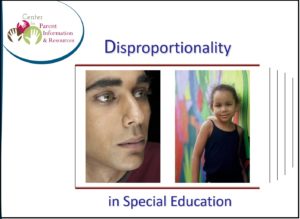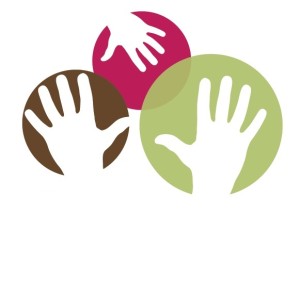“Let the great world spin for ever down the ringing grooves of change.”
–Alfred Lord Tennyson.
 IDEA Turns 45
IDEA Turns 45
On November 29, 1975, President Gerald Ford signed into law the Education for All Handicapped Children Act. Today, we know this law as the Individuals with Disabilities Education Act (IDEA). In the IDEA timeline and resources shared below, learn more or refresh your memory on how this law, through advocacy and its reauthorizations, has sought to improve outcomes for students with disabilities (Part B) and infants and toddlers with disabilities and developmental delays (Part C).
Through the efforts of Parents Centers across the U.S. and territories, families and youth have been accessing the rights contained in this momentous law for over 40 years. As we celebrate IDEA’s birthday, we celebrate each of you for making its promises real in the lives of infants, toddlers, youth, and children.
Debra Bids Us Farewell | Welcome Carolyn
 As Debra Jennings bids CPIR farewell this November, we also celebrate the new Project Director for the Center f
As Debra Jennings bids CPIR farewell this November, we also celebrate the new Project Director for the Center f or Parent Information and Resources, Carolyn Hayer. Carolyn brings to the CPIR her extensive knowledge of the Parent Center and TA&D networks and over 20 years of leadership experience at the Region A PTAC and at New Jersey’s PTI. Please welcome Carolyn!
or Parent Information and Resources, Carolyn Hayer. Carolyn brings to the CPIR her extensive knowledge of the Parent Center and TA&D networks and over 20 years of leadership experience at the Region A PTAC and at New Jersey’s PTI. Please welcome Carolyn!
Grateful for each of you!
Debra Jennings, Carolyn Hayer, and the CPIR Team
_______________________
OSEP Fast Facts: IDEA 45th Anniversary
By 1975, Congress had determined that millions of American children with disabilities were still not receiving an appropriate education, “More than half of the handicapped children in the United States do not receive appropriate educational services which would enable them to have full equality of opportunity” (EHA, §3(b)(3)).
Congress enacted the Education for All Handicapped Children Act (Public Law 94-142) (EHA), to support states and localities in protecting the rights of, meeting the individual needs of, and improving the results for infants, toddlers, children, and youth with disabilities and their families. This landmark law, whose 45th Anniversary we celebrate this year, is currently enacted as the Individuals with Disabilities Education Act (IDEA).This timeline depicts IDEA from its beginnings as the Education of through the last reauthorization in 2004.
_______________________
 IDEA Presentation Materials at Your Fingertips
IDEA Presentation Materials at Your Fingertips
Don’t forget that the Parent Center Hub has curricula you can use for training families and professionals on both Part B and Part C of IDEA 2004, including an updated (2020) module on Disproportionality and Students with Disabilities. Each individual module includes: slide decks; Trainer’s Guides explaining how the slides work as well as the content of the slides; and handouts for participants (available in English and in Spanish). These foundational resources are easy to adapt to include state-specific information and for presentations in a variety of formats (virtual, video, etc.).
Do you know the History of the Parent Centers?
Which current Parent Center was the first Parent Training and Information Center funded? How did Community Parent Resource Centers get started? Learn the answers to these questions and more when you complete the History of Parent Centers module in the Parent Center eLearning Hub. Got credentials for this Parent Centers Only resource? Login here. Need credentials? Please send your request to us.
Creating Effective Partnerships to Improve Early Intervention | Webinar
 Identifying young children as early as possible requires developing nurturing partnerships with families, communities, and programs. This interactive webinar discusses how IDEA early intervention programs can partner with the ambassadors of the Act Early Ambassador program. The webinar provides an overview of the purposes of Part C early intervention services for infants and toddlers and their families and Part B, 619 services for preschool special education. Viewers can learn about Rhode Island’s partnership with their Act Early Ambassador. The Ambassador trains professionals in home visiting programs (e.g., the Maternal, Infant and Early Childhood Home Visiting program; and Parents as Teachers) on how to use “Learn The Signs. Act Early” developmental milestone resources to support earlier identification.
Identifying young children as early as possible requires developing nurturing partnerships with families, communities, and programs. This interactive webinar discusses how IDEA early intervention programs can partner with the ambassadors of the Act Early Ambassador program. The webinar provides an overview of the purposes of Part C early intervention services for infants and toddlers and their families and Part B, 619 services for preschool special education. Viewers can learn about Rhode Island’s partnership with their Act Early Ambassador. The Ambassador trains professionals in home visiting programs (e.g., the Maternal, Infant and Early Childhood Home Visiting program; and Parents as Teachers) on how to use “Learn The Signs. Act Early” developmental milestone resources to support earlier identification.
___________________________
 This eNewsletter from the CPIR is copyright-free.
This eNewsletter from the CPIR is copyright-free.
We encourage you to share it with others.
Center for Parent Information and Resources
c/o SPAN, Inc.
35 Halsey St., Fourth Floor
Newark, NJ 07102
https://www.parentcenterhub.org
Subscribe to the Buzz from the Hub.
See past issues of the Buzz.
____________________________________________________________
Publication of this eNewsletter is made possible through Cooperative Agreement H328R180005 between OSEP and the Statewide Parent Advocacy Network (SPAN). The contents do not necessarily reflect the views or policies of the Department of Education, nor does mention of trade names, commercial products, or organizations imply endorsement by the U.S. Government or by the Center for Parent Information and Resources.

